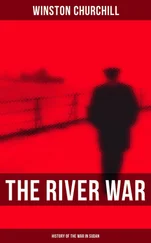1 ...6 7 8 10 11 12 ...40 ***
Mr. Colijn, when as Dutch Prime Minister he visited me in 1937, had explained to me the marvellous efficiency of the Dutch inundations. He could, he explained, by a telephone message from the luncheon table at Chartwell press a button which would confront an invader with impassable water obstacles. But all this was nonsense. The power of a great State against a small one under modern conditions is overwhelming. The Germans broke through at every point, bridging the canals or seizing the locks and water-controls. In a single day all the outer line of the Dutch defences was mastered. At the same time the German Air Force began to use its might upon a defenceless country. Rotterdam was reduced to a blazing ruin. The Hague, Utrecht, and Amsterdam were threatened with the same fate. The Dutch hope that they would be by-passed by the German right-handed swing as in the former war was vain.
However, when the blow fell the Dutch nation instantly rallied to the cause with indomitable courage. Queen Wilhelmina, her family, and the members of her Government were safely brought to England by the Royal Navy, and continued from here to inspire their people and to manage their vast empire overseas. The Queen’s Navy and her great merchant fleet were placed unreservedly under British control, and played a redoubtable part in Allied affairs. The case of Belgium requires more searching statement. Several hundreds of thousands of British and French graves in Belgium mark the struggle of the previous war. The policy of Belgium in the years between the wars had not taken sufficient account of the past. The Belgian leaders saw with worried eyes the internal weakness of France and the vacillating pacifism of Britain. They clung to a strict neutrality. In the years before they were again invaded their attitude towards the two mighty arrays which confronted each other was, officially at any rate, quite impartial. Great allowance must be made for the fearful problems of a small State in such a plight, but the French High Command had for years spoken bitterly of the line taken by the Belgian Government. Their only chance of defending their frontier against a German attack lay in a close alliance with France and Britain. The line of the Albert Canal and other water fronts was highly defensible, and had the British and French armies, aided by the Belgian Army, after the declaration of war, been drawn up on the Belgian frontiers in good time a very strong offensive might have been prepared and launched from these positions against Germany. But the Belgian Government deemed that their safety lay in the most rigid neutrality, and their only hope was founded on German good faith and respect for treaties.
Even after Britain and France had entered into war it was impossible to persuade them to rejoin the old alliance. They declared they would defend their neutrality to the death, and placed nine-tenths of their forces on their German frontier, while at the same time they strictly forbade the Anglo-French army to enter their country and make effective preparations for their defence or for forestalling counter-strokes. The construction of new lines and the anti-tank ditch during the winter of 1939 by the British armies, with the French First Army on their right, along the Franco-Belgian frontier, had been the only measure open to us. It is a haunting question whether the whole policy of Plan D should not have been reviewed upon this basis, and whether we would not have been wiser to stand and fight on the French frontier, and amid these strong defences invite the Belgian Army to fall back upon them, rather than make the hazardous and hurried forward leap to the Dyle or the Albert Canal.
***
No one can understand the decisions of that period without realising the immense authority wielded by the French military leaders and the belief of every French officer that France had the primacy in the military art. France had conducted and carried the main weight of the terrible land fighting from 1914 to 1918. She had lost fourteen hundred thousand men killed. Foch had been given the supreme command, and the great British and Imperial armies of sixty to seventy divisions had been placed, like the Americans, unreservedly under his orders. Now the British Expeditionary Army numbered but three or four hundred thousand men, spread from the bases at Havre and along the coast forward to the line, compared with nearly a hundred French divisions, or over two million Frenchmen, actually holding the long front from Belgium to Switzerland. It was natural therefore that we should place ourselves under their command, and that their judgment should be accepted. It had been expected that General Georges would take full command of the French and British armies in the field from the moment when war was declared, and General Gamelin was expected to retire to an advisory position on the French Military Council. However, General Gamelin was averse from yielding his control as Generalissimo. He retained the supreme direction. A vexatious conflict of authority took place between him and General Georges during the eight months’ lull. General Georges, in my opinion, never had the chance to make the strategic plan in its entirety and on his own responsibility.
The British General Staff and our headquarters in the field had long been anxious about the gap between the northern end of the Maginot Line and the beginning of the British fortified front along the Franco-Belgian frontier. Mr. Hore-Belisha, the Secretary of State for War, raised the point in the War Cabinet on several occasions. Representations were made through military channels. The Cabinet and our military leaders however were naturally shy of criticising those whose armies were ten times as strong as our own. The French thought that the Ardennes were impassable for large modern armies. Marshal Pétain had told the Senate Army Commission, “This sector is not dangerous.” A great deal of field work was done along the Meuse, but nothing like a strong line of pill-boxes and anti-tank obstacles, such as the British had made along the Belgian sector, was attempted. Moreover, General Corap’s Ninth French Army was mainly composed of troops who were definitely below the French standards. Out of its nine divisions, two were of cavalry, partly mechanised, one was a fortress division, two (61 and 53) belonged to a secondary category, two (22 and 18) were not much inferior to active divisions; only two were divisions of the permanent regular army. Here, then, from Sedan to Hirson, on the Oise, along a front of fifty miles, there were no permanent fortifications, and only two divisions of professional troops.
One cannot be strong everywhere. It is often right and necessary to hold long sectors of a frontier with light covering forces, but this of course should be only with the object of gathering larger reserves for counter-attacks when the enemy’s striking-points are revealed. The spreading of forty-three divisions, or half the mobile French army, from Longwy to the Swiss frontier, the whole of which was either defended by the Maginot Line forts or by the broad, swift-flowing Rhine, with its own fortress system behind it, was an improvident disposition. The risks that have to be run by the defender are more trying than those which an assailant, who is presumably the stronger at the point of attack, must dare. Where very long fronts are concerned, they can only be met by strong mobile reserves which can rapidly intervene in a decisive battle. A weight of opinion supports the criticism that the French reserves were inadequate, and, such as they were, badly distributed. After all, the gap behind the Ardennes opened the shortest road from Germany to Paris, and had for centuries been a famous battleground. If the enemy penetrated here the whole forward movement of the Northern Armies would be deprived of its pivot, and all their communications would be endangered equally with the capital.
Читать дальше











